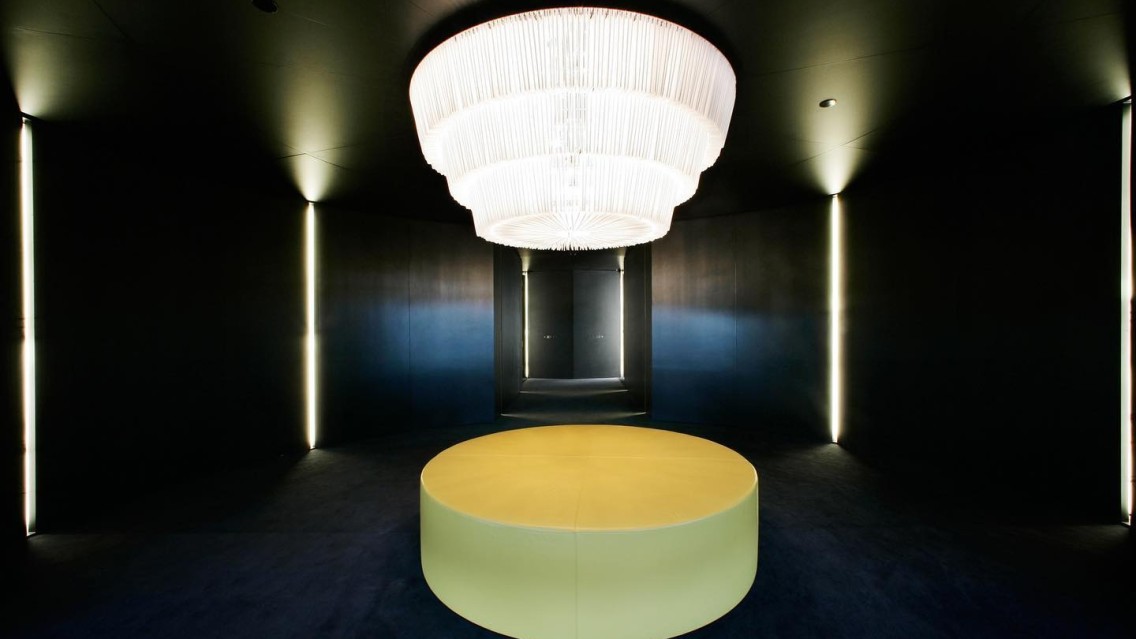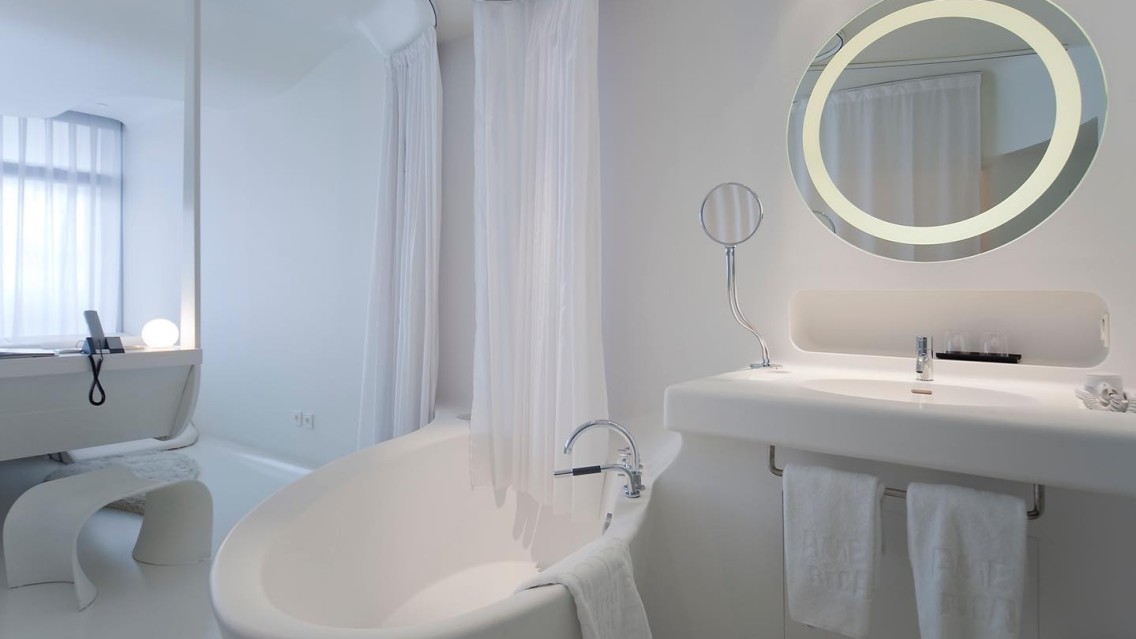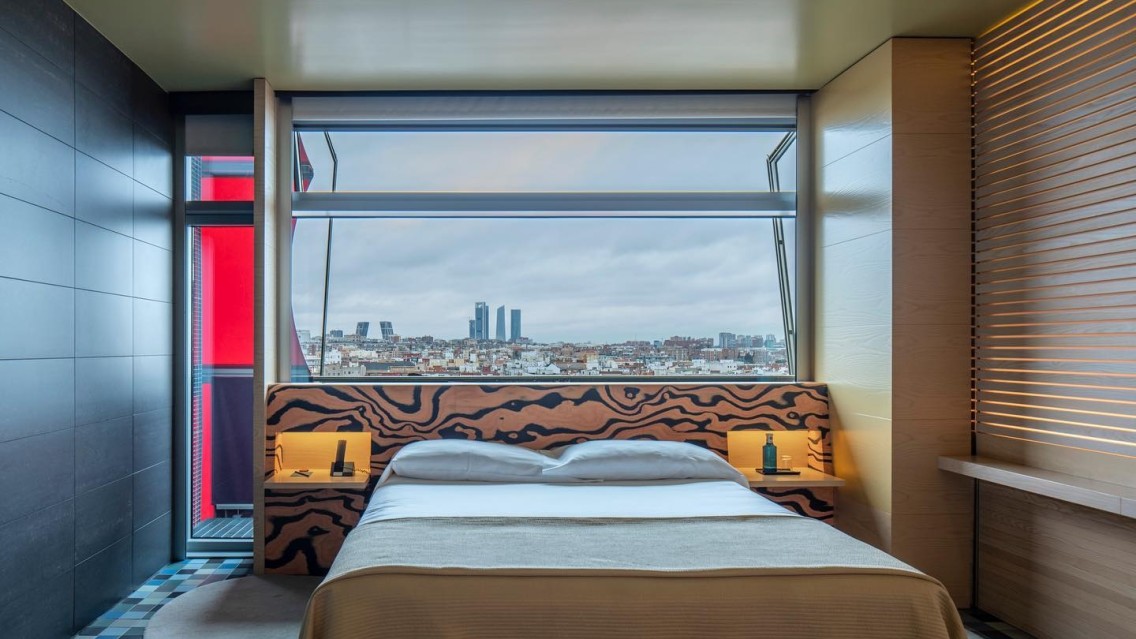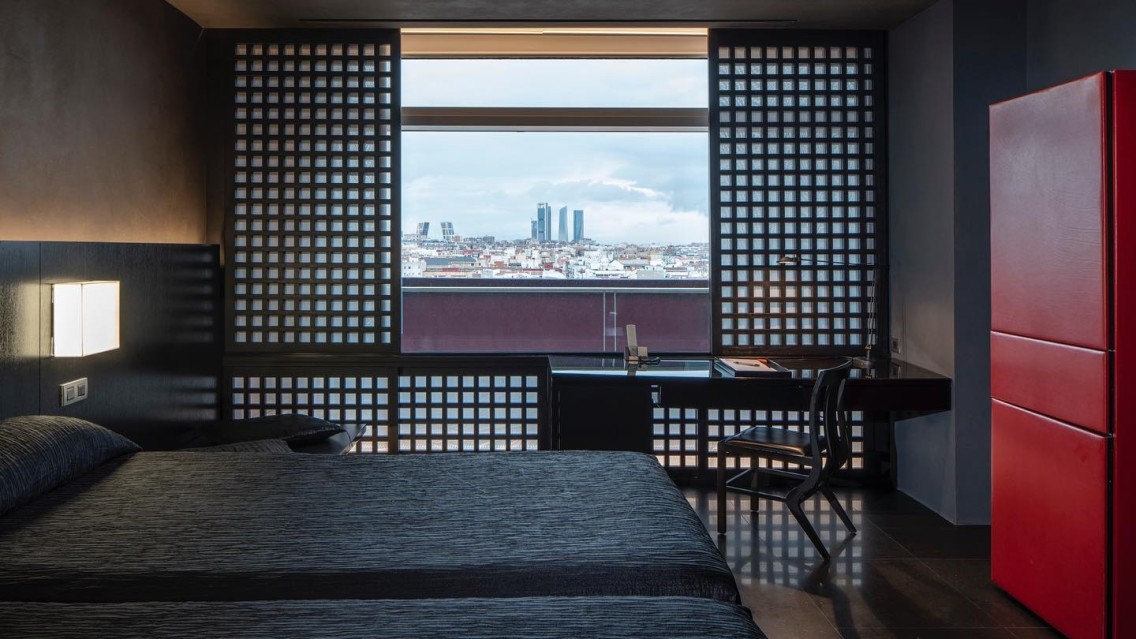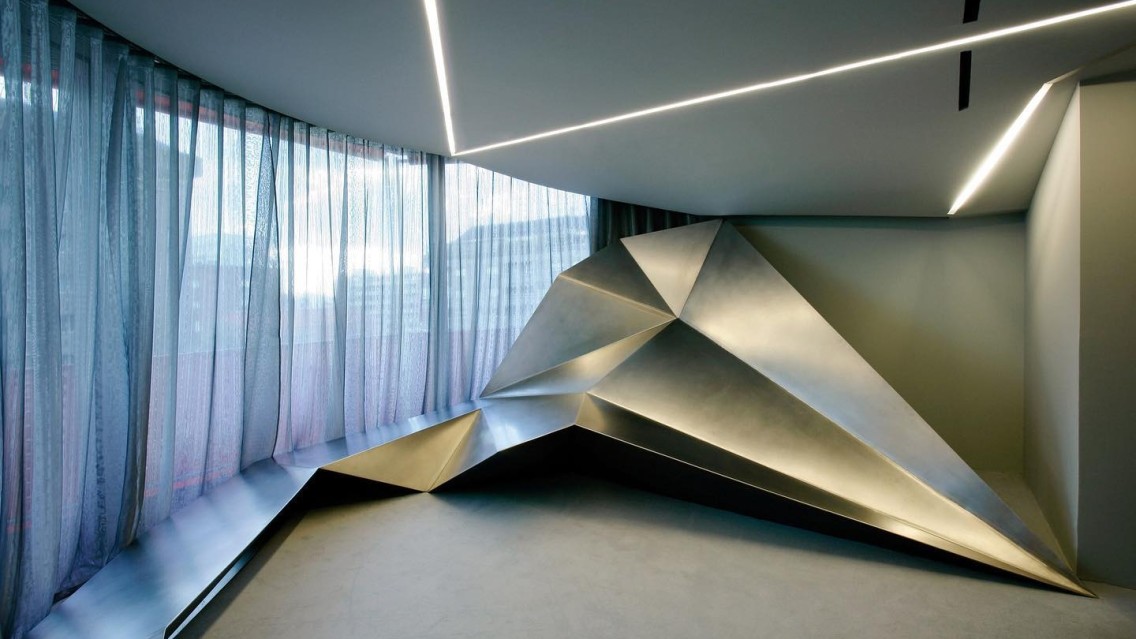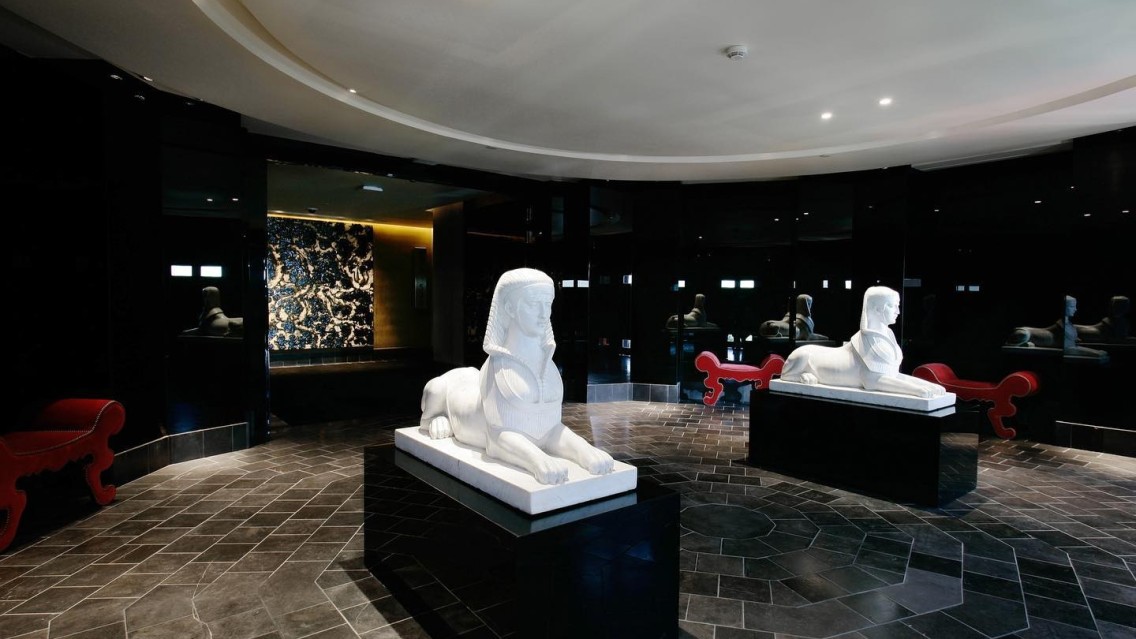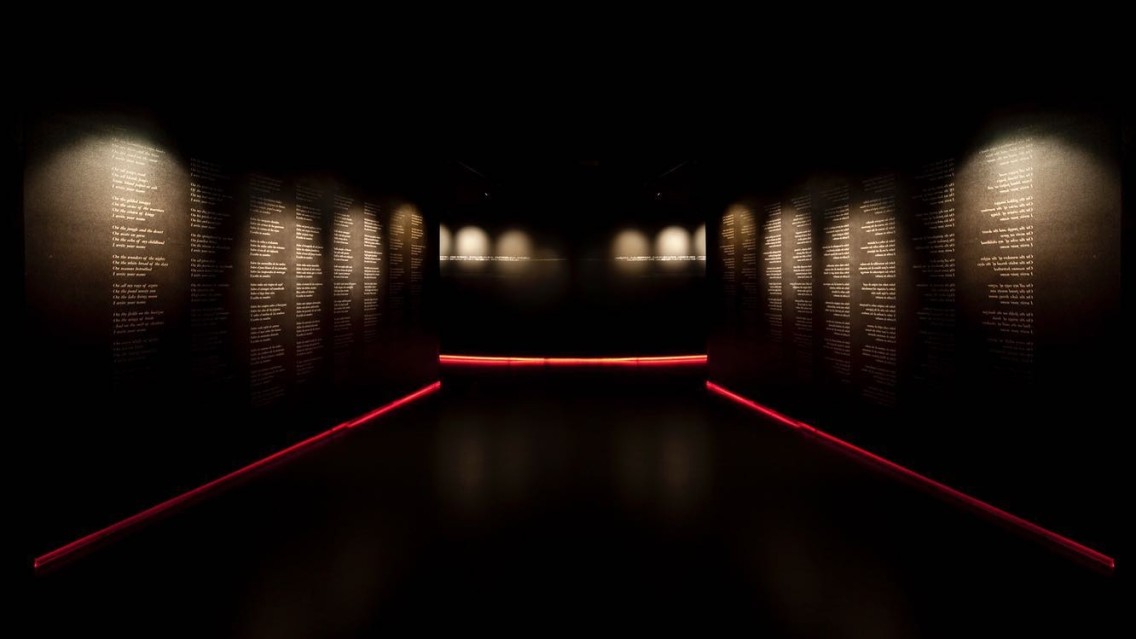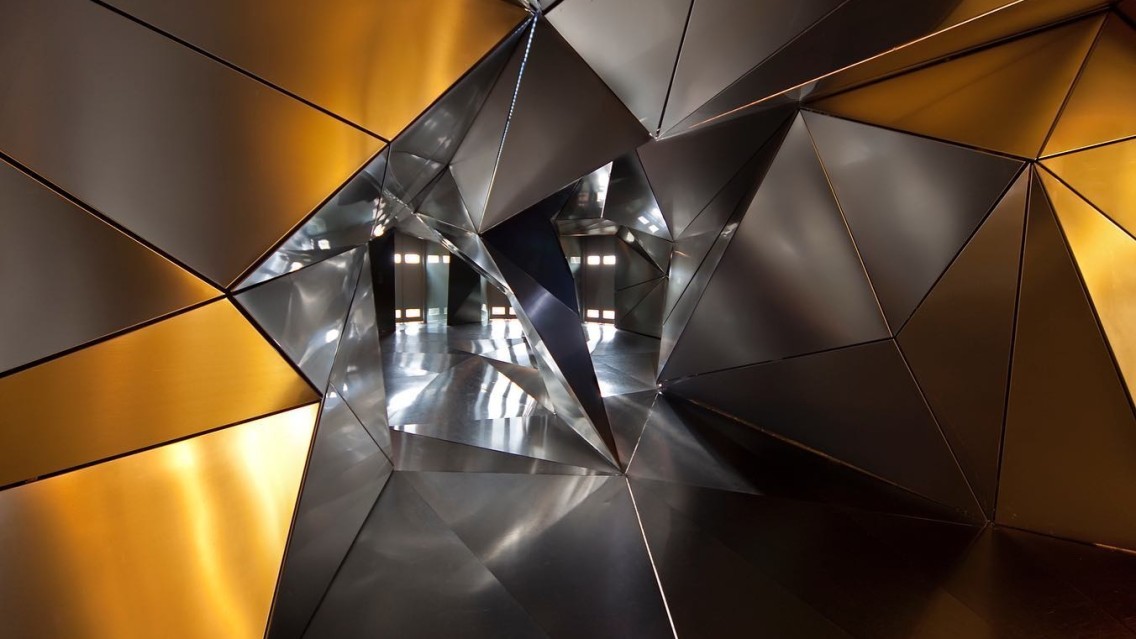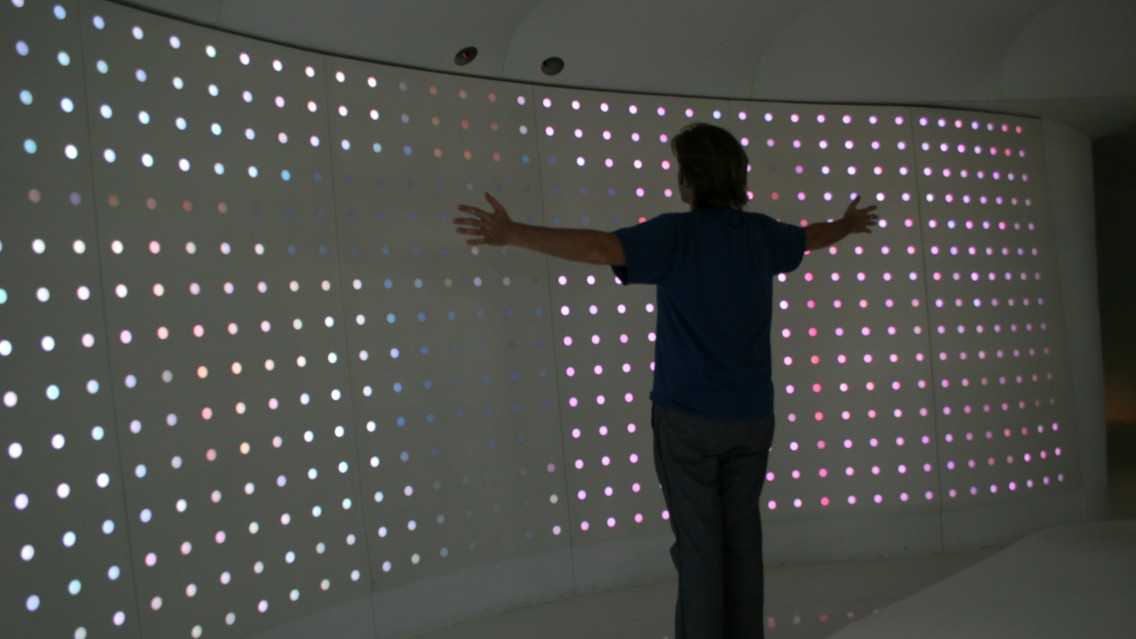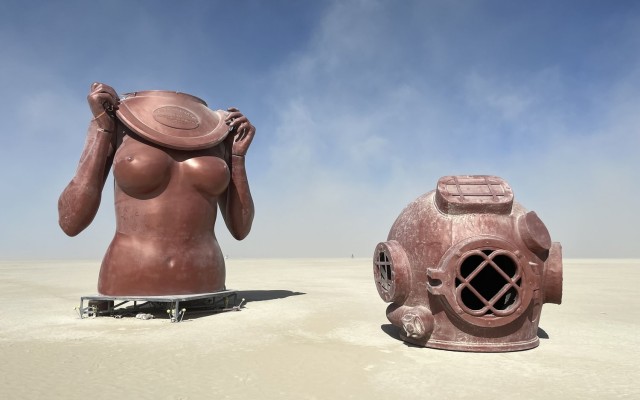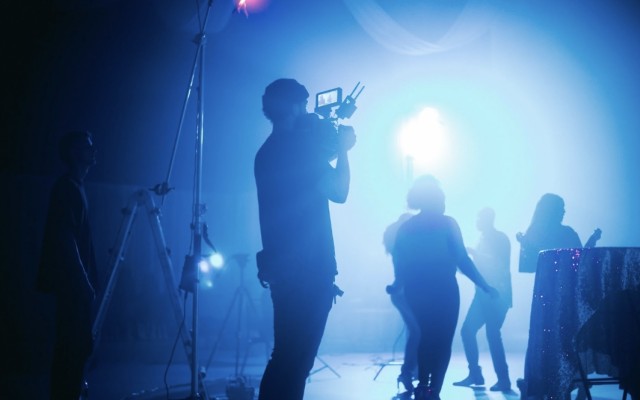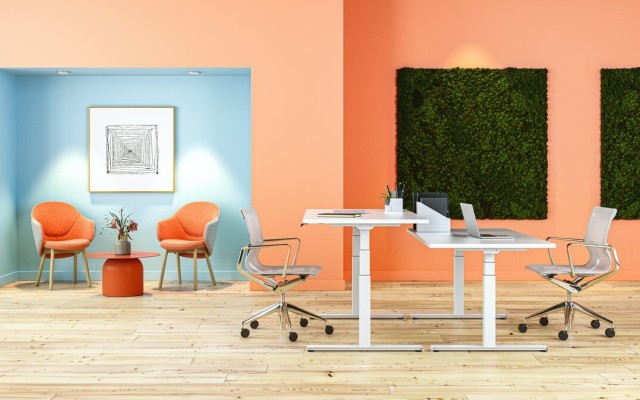 Create a Completely Different World on Each Floor of a Hotel?
Create a Completely Different World on Each Floor of a Hotel?
Article
faster than the Hyperloop

Hotel Puerta America Madrid
A homage to the world of architecture, design, and freedom
Usually, a hotel’s hallways and rooms all look the same. Hotel Puerta América Madrid is the very antithesis of this.
Its elevator doors open to interiors with Japanese influences, geometric shapes in shiny chrome, and a space that looks like a science fiction movie set. How did this hotel end up with such a wide variation of interior styles?
Opening its doors to the public in 2005 as part of the Silken Hotel Group, an investment of over 75 million euros commissioned a star-studded lineup of designers to work on the 12-story hotel, including Zaha Hadid, Marc Newson, Arata Isozaki, Plasma Studio, Kathryn Findlay, and more.
However, instead of collaborating to create cohesion throughout the hotel, each designer was given ‘carte blanche’ to design a complete floor of their own. The result: a completely different universe on each floor.
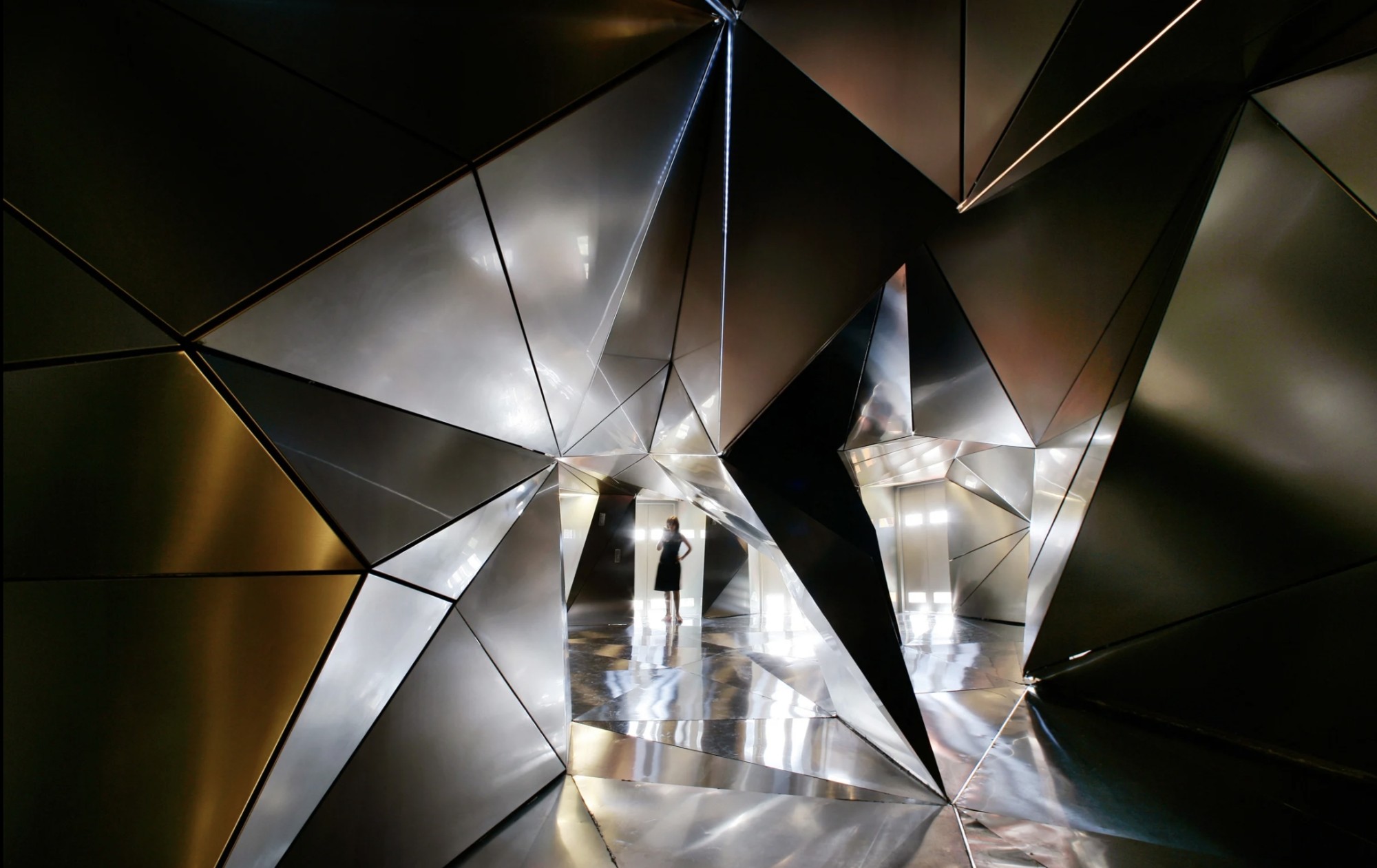
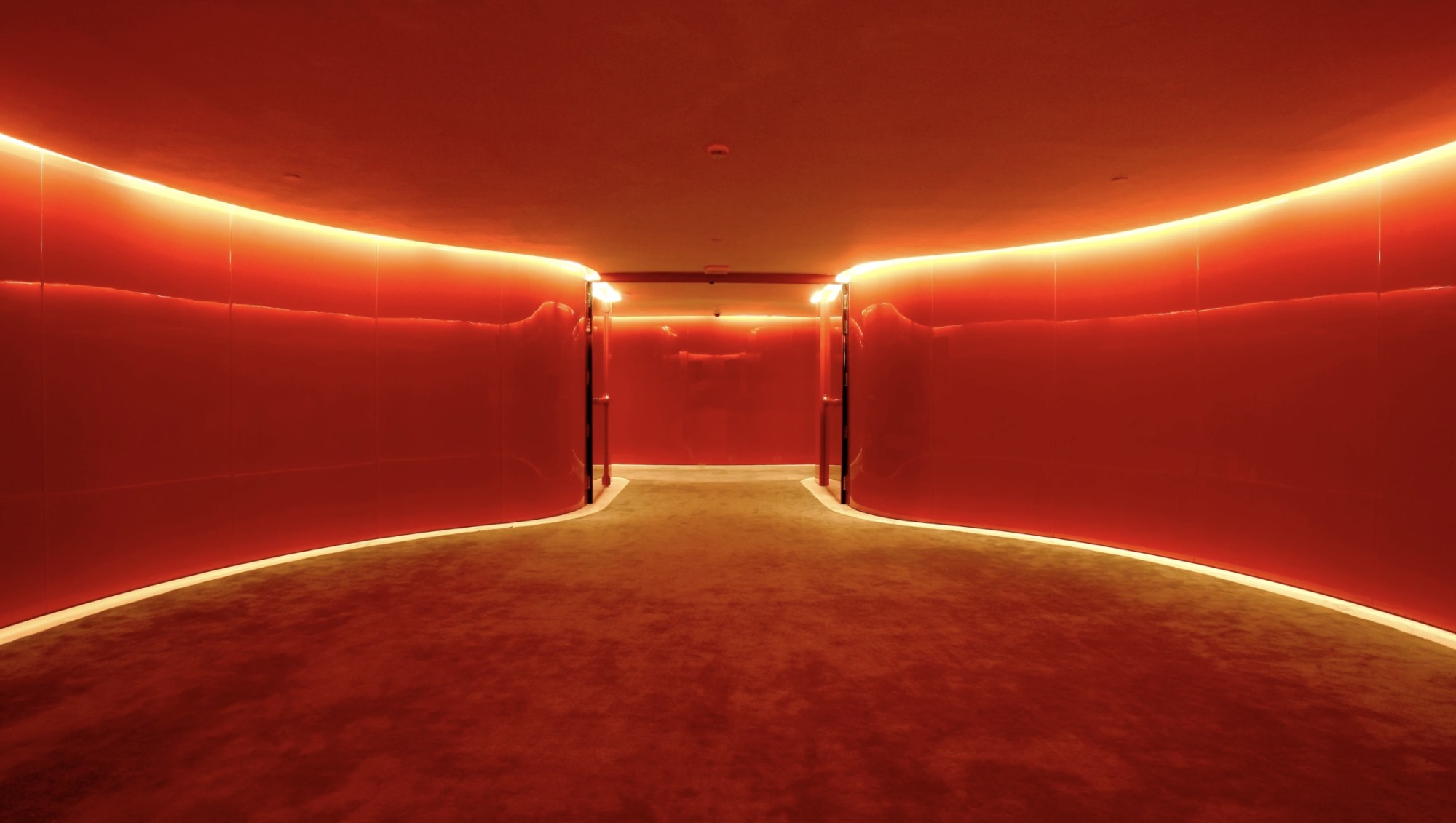

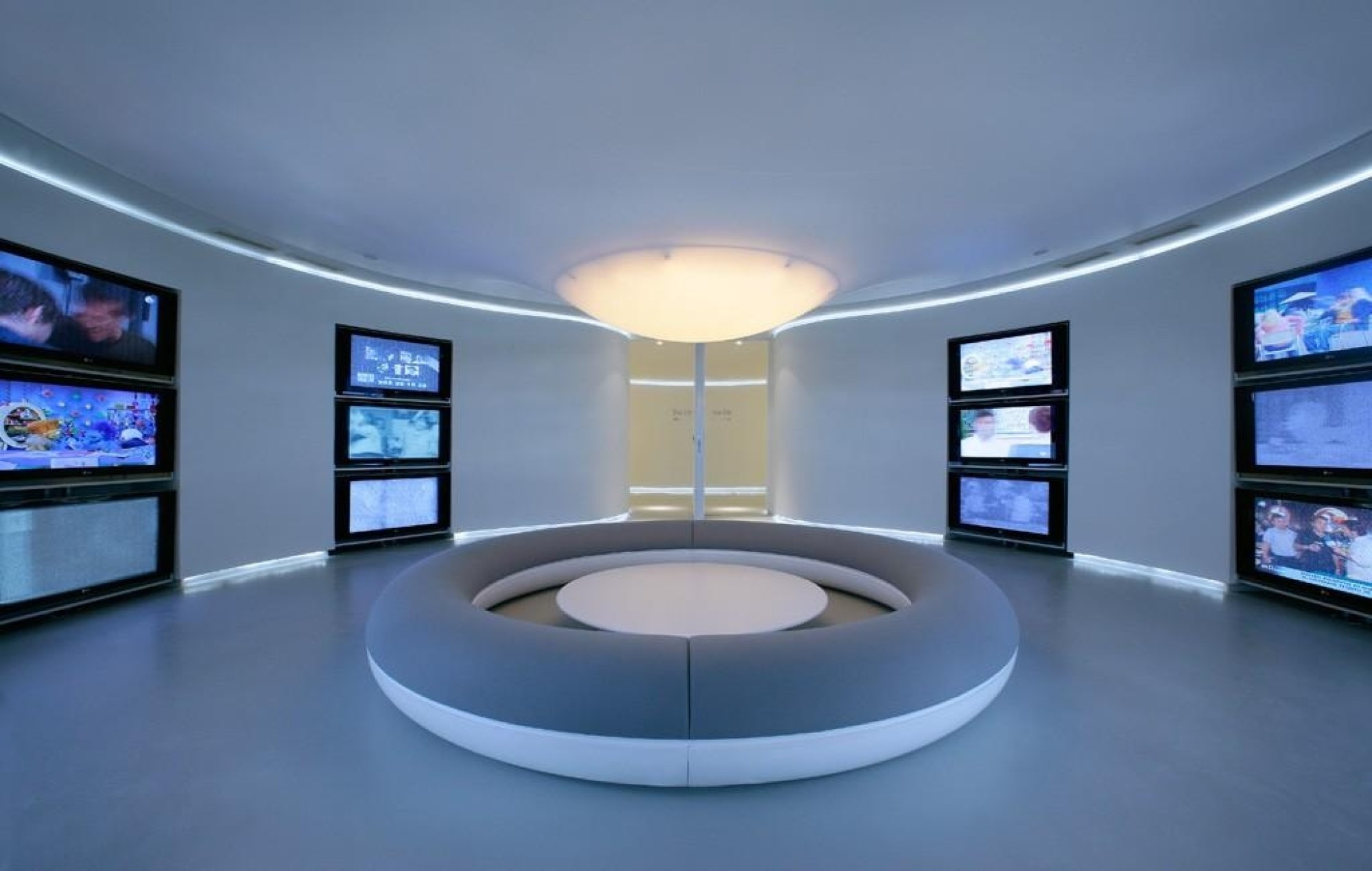
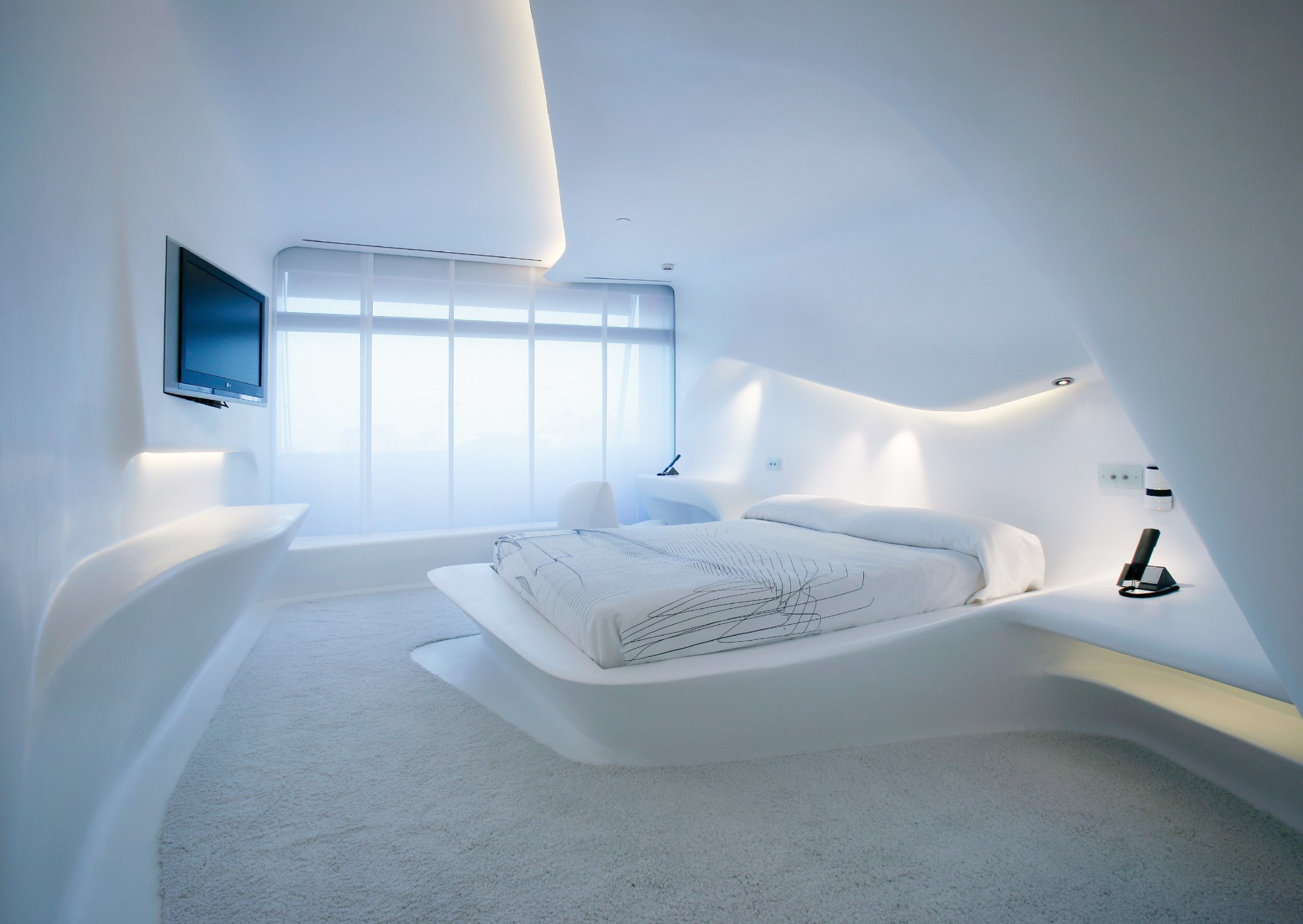
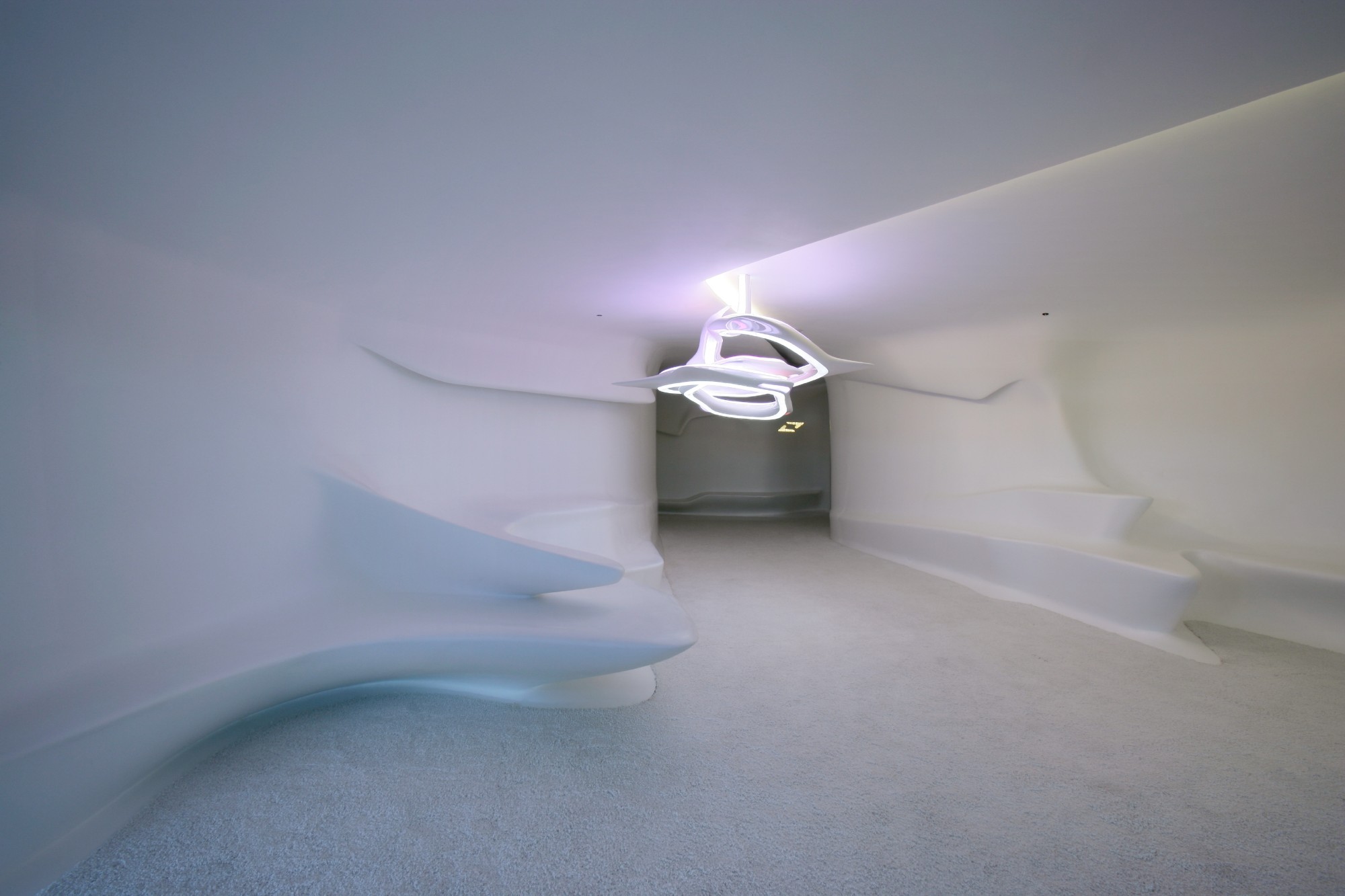
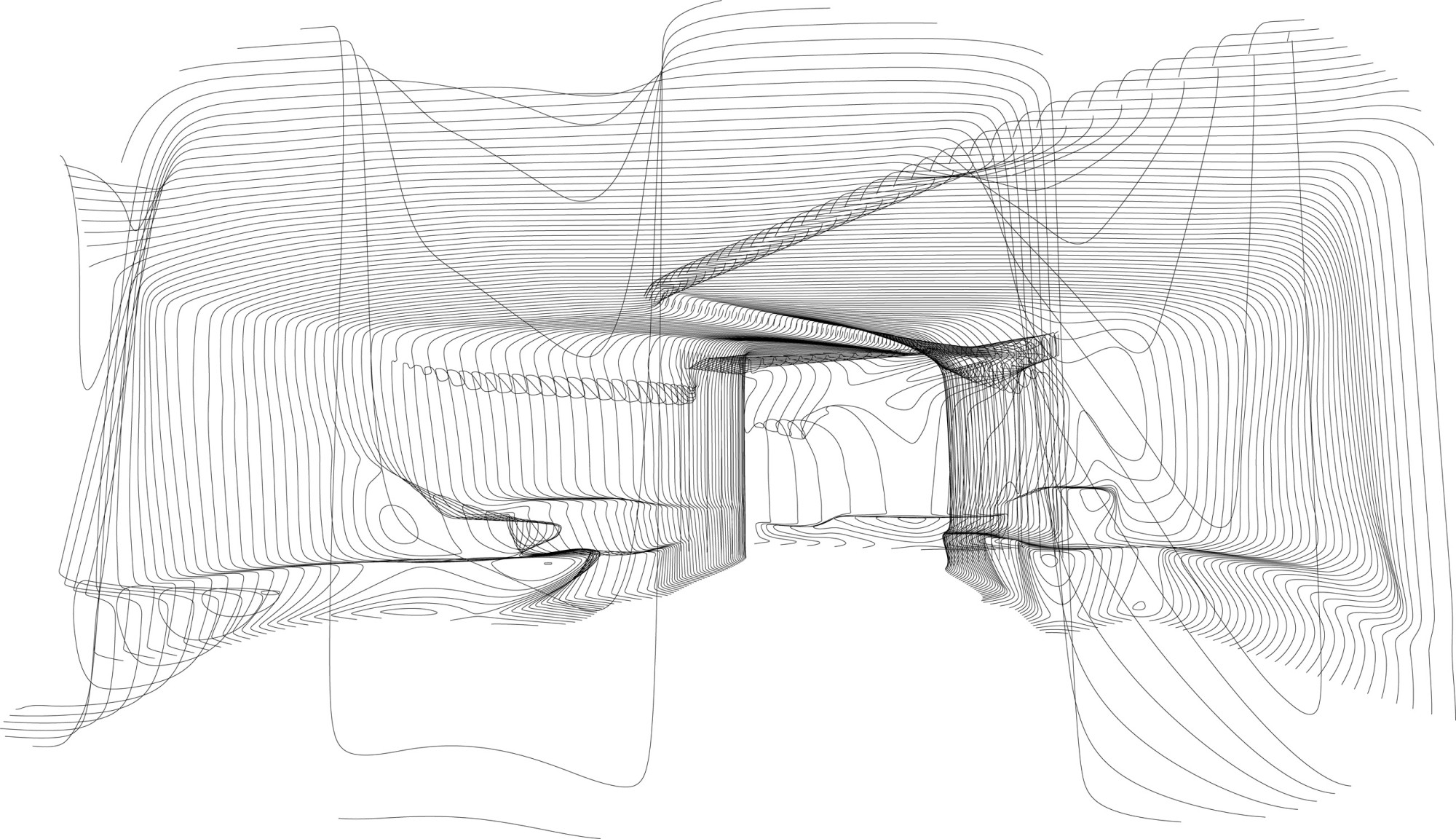
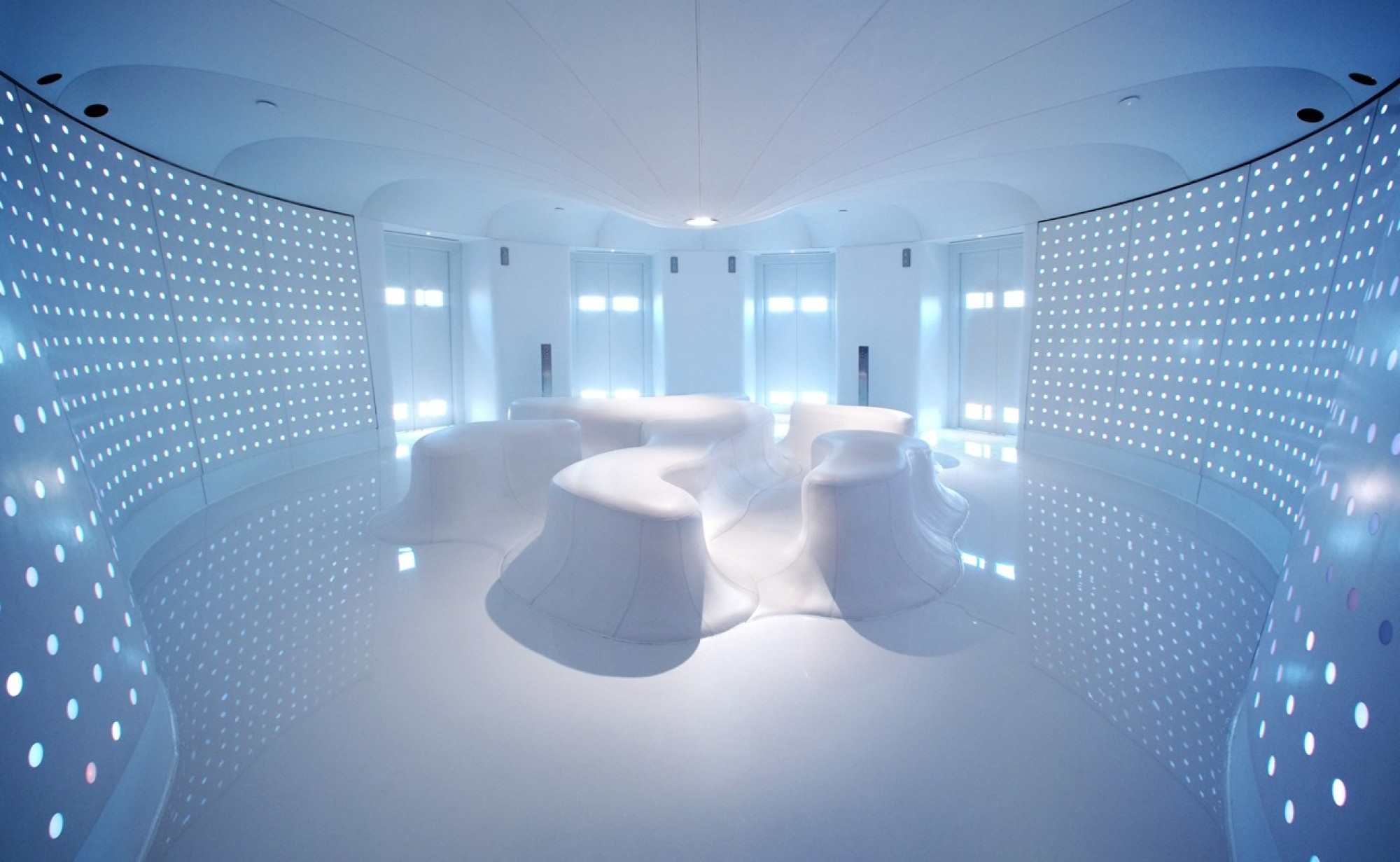
We made this massive submit button to show that we are truly interested in hearing about your projects.
Articles

